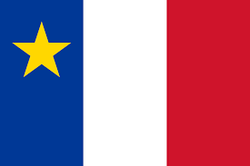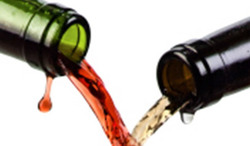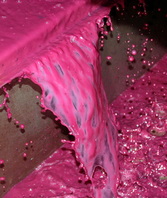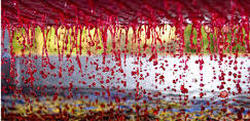 Recently, while wingrunting, I was engaged in a conversation about wine with a woman. While we began our conversation in English, I immediately noticed that she pronounced certain grape varietals, such as L’Acadie Blanc and Maréchal Foch like a francophone. For the next few minutes I switched and spoke French with her. Then our conversation continued, sometimes in English other times in French. While I am not used to having this kind of back and forth outside of Montréal, I asked a question which, in hindsight, I know to feed into one of the many false dichotomies created by the culture we live in. I asked her: “Alors, vous êtes francophone ou anglophone?” She smiled at me indulgently and replied: “Non, je suis Acadienne.” I could not help but smile too at the immediate realization of my own misconceptions. In a similar vein (delayed pun intended, see saignée method below) while winegrunting, I have noticed that there is often the misconception among people that rosé wines always are the result of a blend of red and white grapes. While this is indeed one method to create rosé, there are in fact three different methods: The blending method, the maceration method, and the saignée (bled) method.  The blending method is the method most often assumed by people to be the only method by which rosé wine are made. This method is achieved when a little bit of red wine is added to a vat of white wine to make rosé. It doesn’t take much red wine to dye a white wine pink, so usually these wines will have up to 5% or so, of a red wine added. This method is very uncommon with still rosé wines but happens much more in sparkling wine regions such as Champagne. An example of a very fine wine made with this technique is Ruinart’s rosé Champagne, which is primarily Chardonnay with a smidgen of red Pinot Noir blended in. However, there are two other ways in which rosé wines can be made. These methods, in fact, tie into my topic for the day, in a way they are, like my Acadian acquaintance: neither, nor. In this case, they are neither a blend or red and white, nor are they properly a red.  The maceration method is when red wine grapes are let to rest, or macerate, in the juice for a period of time and afterward the entire batch of juice is finished into a rosé wine. In this method, the skin contact is just long enough to give the juice it’s pink hue, but not long enough to qualify it as a red wine. The maceration method is the probably the most common type of rosé we see available and is used in regions like Provence and Languedoc-Roussillon, France where rosé is as important as red or white wine.  The saignée method is when during the first few hours of making a red wine, some of the juice is bled off and put into a new vat to make rosé. This method is very common in wine regions that make fine red wines such as Napa and Sonoma. The purpose of bleeding off the juice not only produces a lovely rosé but it also concentrates the red wines’ intensity. Saignée wines are pretty rare, due to the production method and often will make up only about 10% or less, of a winery’s production.
0 Comments
Your comment will be posted after it is approved.
Leave a Reply. |
AuthorsAstrid Friedrich Archives
May 2017
Categories
All
|

 RSS Feed
RSS Feed